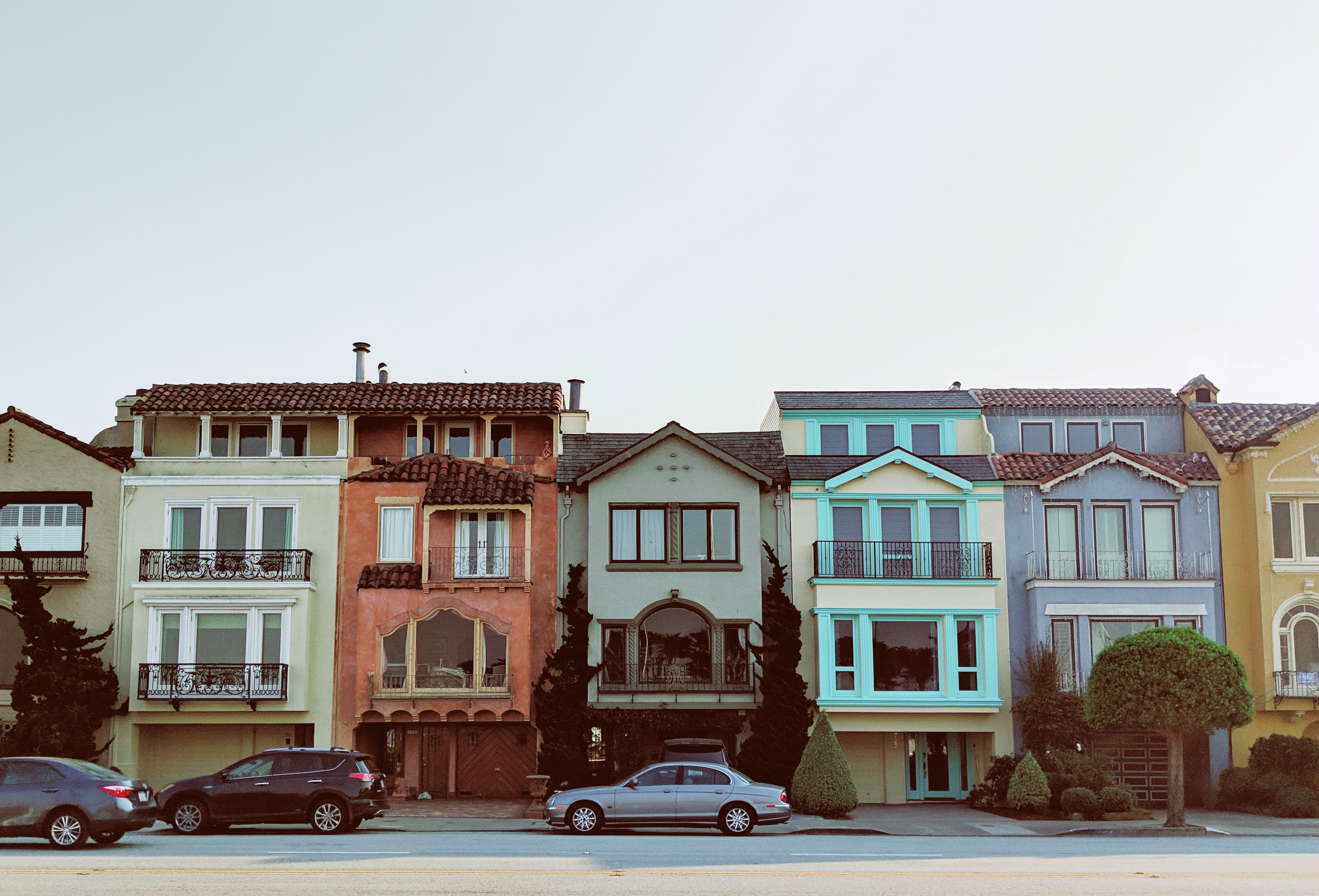

By David M. Greenwald
Executive Editor
San Francisco, CA – All eyes in the state have been on San Francisco this week as the SF Board of Supervisors unanimously approved a plan to build 82,000 new homes over the next 8 years, 46,000 of them to be affordable.
As the SF Chronicle reported, “It’s an ambitious plan that would require the city to build 10,000 housing units each year — twice as many as it has built in its most prolific years and about four times as much as it has averaged over the past two decades. More than half of the 82,000 homes must be affordable to low- and moderate-income households, which will be a steep challenge for San Francisco, with one unit of affordable housing costing nearly $1.2 million.”
The paper added, “All 11 supervisors voted in favor of the plan without making any comments. While housing policy is frequently a politically divisive issue in San Francisco, the board was only allowed to take an up-or-down vote on the housing element — it couldn’t make any changes on Tuesday.”
Mayor London Breed tweeted, “Today is a major step to change how we approach housing in SF. After next week’s final vote, I will sign and submit this Housing Element to the state and  we’ll turn to doing the hard work to change laws & processes that get in the way of building housing.”
we’ll turn to doing the hard work to change laws & processes that get in the way of building housing.”
She added, “This work will take not just months, but years. We can no longer rely on past thinking to get anywhere near building 82,000 homes over eight years. I’m hopeful for the work that lies ahead, and optimistic about what we can do.”
Senator Wiener called this a “monumental accomplishment.” He said, “In a time of division and rancor, the Housing Element passed by the Board today takes a bold step toward a real solution to our severe housing shortage. While much work remains — the city continues to place unnecessary, harmful obstacles in the way of new homes — today’s vote shows that the art of coming together to solve big problems is not dead in San Francisco.”
He added, “Much work remains to address the decades of neglect that created California’s housing crisis, but today’s vote shows how far we’ve come. Thanks to our work at the state level, fantastic advocacy, and state and local officials committed to changing our broken housing system, cities across California are starting to make up for lost time this planning cycle — even cities, like San Francisco, that have become synonymous with anti-housing policies.”
Clearly this is an ambitious plan—
the numbers are stunning because San Francisco is committing to a far higher level of housing than has been built over the last two decades.
I think an important question is to ask how they will get there and what lessons we might be able to glean from this.
The affordable housing plan notes, “A substantial portion of San Francisco’s RHNA targets are likely to be met from the City’s pipeline of approved and entitled residential development projects, including large projects covering multiple parcels, and projects awaiting approvals or building permits.”
In fact, “San Francisco has approximately 19 development agreements (DAs) or other projects that sit on large sites, often made up of multiple parcels.”
They are also rebuilding public housing on large sites and preserving existing affordable housing. According to their analysis, “per RHNA Adequate Sites Alternative guidelines allowing up to 25% of the lower income RHNA to be met through substantial rehabilitation, conversion, and preservation of existing affordable housing.”
San Francisco has been “using a combination of local, state, and federal funding to acquire for-profit privately owned multifamily housing and privately owned motels and hotels and convert these buildings to permanent supportive housing for formerly homeless people.”
They note, “Facilitated by local, state, and federal funding and policies, in recent years San Francisco has been acquiring existing rental housing, hotels, and motels for conversion to permanently affordable housing and supportive housing for the formerly unhoused.”
They add, “San Francisco has also acquired hundreds of housing units and hotel and motel rooms for use as Permanent Supportive Housing units for formerly unhoused people.”
Supervisor Dean Preston put out a plan for his district to maximize affordable housing. Preston noted in a report he put out, “In the most recent cycle, the city had a mandate to create 16,333 new affordable homes, but only delivered on approximately half of that goal.”
He said, “What we’ve done in the past has not worked, and if we don’t aggressively change course, the city is set to come up short again.”
He called on the city to “dedicate significant local funds to this effort, and we need to maximize every available opportunity from the state and federal level.”
Preston added, “Funding is a crucial piece, but at the same time we need to be ambitiously identifying opportunity sites for land banking, affordable housing acquisition, and the development of new affordable housing. With the private market failing to produce housing, the time is ripe for the city to step in and acquire entitled sites to create affordable homes. And for sites already owned by the city or the state, the new affordability goals provide a renewed sense of urgency to develop as quickly as we can.”
When I inquired as to whether Davis could do something similar and acquire sites to create affordable housing, one of the concerns mentioned was cost and location.
I do think the council could look at current city-owned sites to develop affordable housing. They also can look into purchasing other sites and developing affordable housing. And finally, and this again will be controversial, look into ways to ease Measure J exemptions to create large scale affordable housing on the periphery.







So, I’m glad to see that David is looking at San Francisco’s plan, by quoting the Chronicle.
Here’s another perspective:
https://48hills.org/2023/01/supes-to-consider-housing-farce-and-start-on-the-mayors-budget/
Of course, it’s impossible to know how (in advance) whether or not this plan actually results in Affordable housing, or to what degree. But perhaps the more-important point is that if San Francisco (which is far more-dense than Davis, and cannot expand its boundaries – regardless of any development activism) can get a plan like this approved, so can Davis.
And again, Davis and San Francisco are only two of the cities across the state which are facing such mandates. (No doubt, the majority of which don’t have a small chorus of development activists advocating for the destruction of farmland outside of city limits.)
It should also be noted that any government Affordable housing funds that are not used in Davis are then available to other cities. These funds are not unlimited.
“Everybody knows the Housing Element won’t work”
I don’t know what “won’t work” means in this context. Pretty much everyone agrees the numbers are huge lift (hence my use of the Chronicle).
Based upon your own comment, it seems that you (and anyone reading it) do know what this meant. “Probably” has something to do with this:
Then there’s this, from your own article (referenced to the Chronicle):
In any case, we’ll find out at the end of the upcoming cycle.
But let’s face it – there’s no way that the state can “ensure” that this housing is actually built, statewide. YIMBY involvement, or not.
And city leaders (statewide) already know this.
As the article notes, just play-along, take the money from the state (and avoid directly-challenging them), allocate some of that money for developments, and you’ll be fine.
There’s plenty of cities (and residents therein) that are more willing than Davis to take an active role in fighting the state.
I think the wording is poor. It’s not a matter of “working” it’s a matter that they likely won’t reach the goal. Everyone understands that they need to try.
Normally (including in your own articles), there’s no acknowledgement that the state’s mandates will fail (or partially-fail).
I’m not sure that’s true. As noted, there are cities actively fighting the state’s mandates, as well.
Now if you said, “most” people – that might be true.
Probably true of most politicians (or at least the ones in urban areas). And certainly most of the mainstream media.
But as usual, I suspect that there’s actually some disconnect between voters in those areas, vs. their own representatives (regarding this issue, at least). So far, it hasn’t reached a mass boiling point (and may never do so), given the likely failure of these mandates.
Not so much difference between those politicians and the interests which support them, though. (The interests which fund their candidacies in the first place.)
If you want to know where some “difference” is (between those struggling with housing costs, vs. those same politicians) look no further than the issue of rent control.